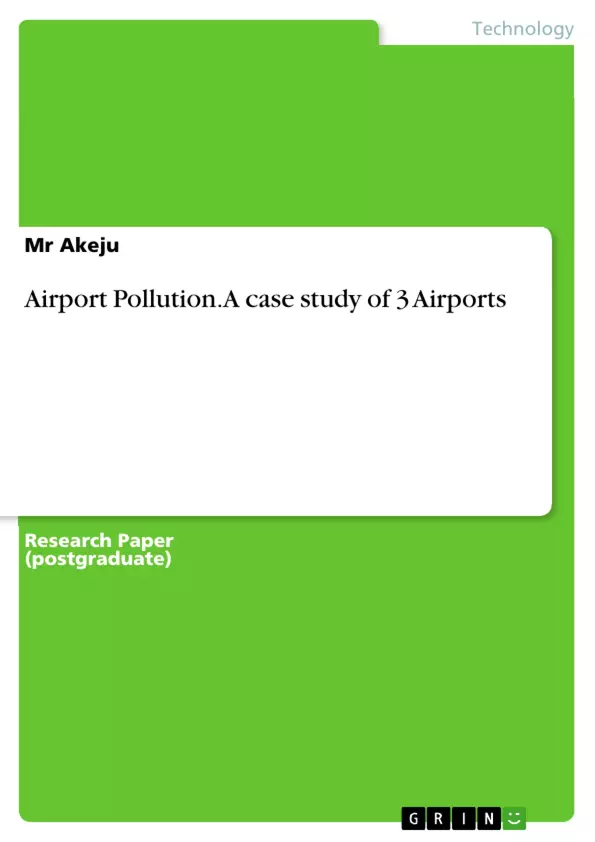We analyzed these variations related to communities in the vicinity of the airports. Also, we examined the impact of these pollutants on the morbidity and mortality rate of the COVID-19 virus.
Our study shows that: air pollution reduced in communities around the airport during the lockdown and low operations; areas downwind and in the vicinity of the airport recorded high incidence and mortality during the pandemic. These changes in pollution, incidence, and mortality are represented in charts available in the research study.
Air pollution is a critical issue in urban cities. While air pollution has been reduced in some cities, its effect on human health is considerable. In this study, data for air pollutants, mainly oxides of Nitrogen and Particulate matter, was observed for variations before and during the pandemic lockdown from three airports in two countries.
Inhaltsverzeichnis (Table of Contents)
- Abstract
- Introduction
- Background
- Study Theoretical Framework
- Methodology
- Discussion - The Cases
Zielsetzung und Themenschwerpunkte (Objectives and Key Themes)
This study examines the impact of airport operations on air pollution and its effect on the health of surrounding communities. It uses data from three international airports during the COVID-19 pandemic to investigate the relationship between air pollutants, primarily oxides of nitrogen and particulate matter, and morbidity and mortality rates in the surrounding areas.
- The impact of airport operations on air pollution levels in nearby communities.
- The relationship between air pollution and COVID-19 morbidity and mortality rates.
- The differential burden of air pollution on communities near airports.
- The effectiveness of existing policies and regulations in mitigating airport pollution.
- The role of environmental justice in addressing the health impacts of airport operations.
Zusammenfassung der Kapitel (Chapter Summaries)
- Abstract: The study focuses on the impact of airport operations on air pollution, particularly oxides of nitrogen and particulate matter, and its relationship to COVID-19 morbidity and mortality rates in nearby communities. It analyzes data from three international airports before and during the pandemic lockdown.
- Introduction: The introduction highlights the connection between air pollution and public health, emphasizing the detrimental effects of pollutants like particulate matter and nitrogen dioxide on respiratory health and the potential worsening of health outcomes during pandemics.
- Background: This section discusses the significant contribution of airport activities, including aircraft operations, airport support vehicles, and road traffic, to air and noise pollution. It also reviews previous research on the health impacts of airport operations and the limitations of existing policies in addressing these issues.
- Study Theoretical Framework: The study employs the differential distribution theory to explain the disproportionate impact of airport pollution on communities in close proximity. This theory suggests that air pollution and socioeconomic factors can influence health and well-being in these communities.
- Methodology: The methodology outlines the use of empirical and scientific literature reviews, government policies, standards, and regulations related to airports and environmental management to analyze data on air pollution and health outcomes before and during the COVID-19 ban at three selected airports: Heathrow (LHR), JFK, and Los Angeles International Airport (LAX).
Schlüsselwörter (Keywords)
The primary keywords and focus topics include air pollution, pollutants, COVID-19, airport operations, community health, morbidity and mortality, differential distribution theory, environmental justice, and airport policy effectiveness.
- Arbeit zitieren
- Mr Akeju (Autor:in), 2020, Airport Pollution. A case study of 3 Airports, München, GRIN Verlag, https://www.hausarbeiten.de/document/1457365


